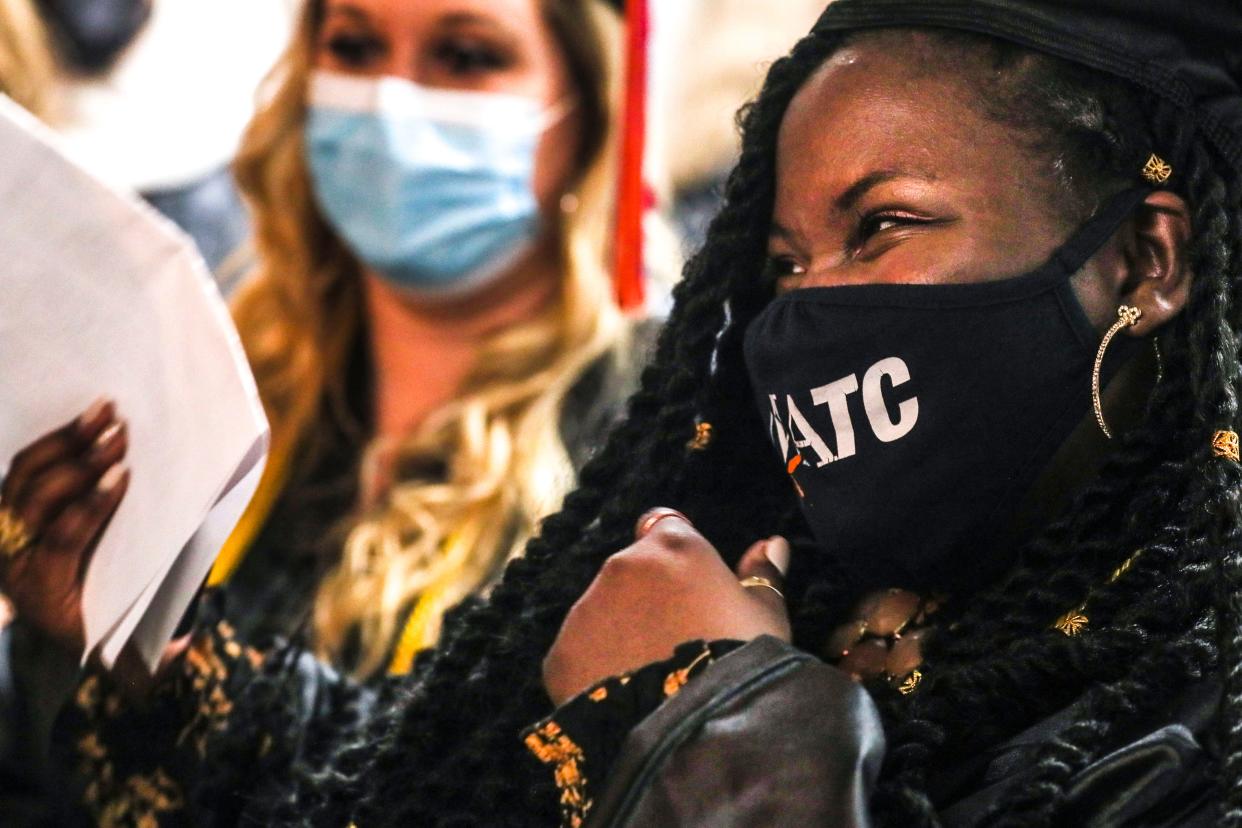More high schoolers are earning college credit in Wisconsin

Nearly one in four Wisconsin high schoolers earned college credit in the 2021-22 school year through a public university or technical college, according to a Wisconsin Policy Forum study released Wednesday.
The number of high school students taking advantage of "dual enrollment" programs statewide has more than doubled in the past decade, rising to 69,471 in the 2021-22 school year, the study found.
Researchers examined data from the Wisconsin Technical College System and University of Wisconsin System. Data on dual enrollment at Wisconsin's 22 private colleges and universities were not included.
How does dual enrollment work in Wisconsin?
While dually enrolled in high school and college, students earn credits that can be used toward degrees at post-secondary institutions like four-year and two-year colleges. Most programs, but not all, are free for students because costs are covered by a mixture of outside sources like school districts and colleges.
Most students will be able to find a program through their high school, local community college or UW System campus. They might take classes in their high school building with a pre-approved teacher, travel to a college campus, learn virtually, or some mixture in between.
The most popular subjects among UW System classes were mathematics, English and Spanish. Medical terminology, introduction to psychology and oral/interpersonal communications were most popular among the WTCS dual enrollment courses studied in the Wisconsin Policy Forum report.
The WTCS "transcripted credit" program drew in 50,863 students in 2021-22. Those students all learned from their high school buildings without having to pay tuition. It's one of five dual credit programs offered by the state technical college system, all of which require students to be at least 16-years-old.
Another 9,910 students in 2021-22 enrolled in a "College Credit in High School" program through the UW System. The CCIH programs go by different names on different system campuses.
Why is dual enrollment increasing?
Researchers from the nonpartisan research organization did not point to a specific force driving the increase in dual enrollment. Because of the array of programs available statewide, the "steady and substantial enrollment increases" could be tied to several factors, the study reads.
But it's clear that, for students, dual enrollment comes with a clear benefit: cost-savings on an already expensive pathway toward a degree. For colleges, dual credit programs serve as a recruitment opportunity.
Few studies on Wisconsin's dual credit options exist, despite national research suggesting their benefits. More statewide school enrollment and demographic data, plus coordination between the state's colleges and universities, are necessary to better understand dual enrollment in the state, researchers wrote.
"As dual credit participation increases, it becomes all the more important to make sure these programs are effectively serving students across the state and doing so equitably," the report reads. "Dual enrollment could be a tool to reduce disparities or widen them, depending how it is used."
Does Milwaukee offer dual enrollment classes?
The Milwaukee Public School district offers dual credit options through the Milwaukee Area Technical College and University of Wisconsin-Milwaukee, among other postsecondary options.
One example is the M3 program, which pays for Milwaukee students to take courses in nursing, general education and teaching at MATC or UW-Milwaukee. Students are able to graduate the program with licensed practical nurse (LPN) and certified nursing assistant (CNA) certifications, or having completed general education requirements for most associate's and bachelor's degrees.
State data show 935 Milwaukee students completed at least one dual enrollment course in 2021-22, or about 4.7% of ninth through 12th graders. That's below the state average of 18.6% for the same age group.
Cleo Krejci covers higher education, vocational training and retraining as a Report For America corps member based at the Milwaukee Journal Sentinel. Contact her at CKrejci@gannett.com. Follow her on Twitter @_CleoKrejci.
This article originally appeared on Milwaukee Journal Sentinel: Dual enrollment expanding over time in Wisconsin high schools

